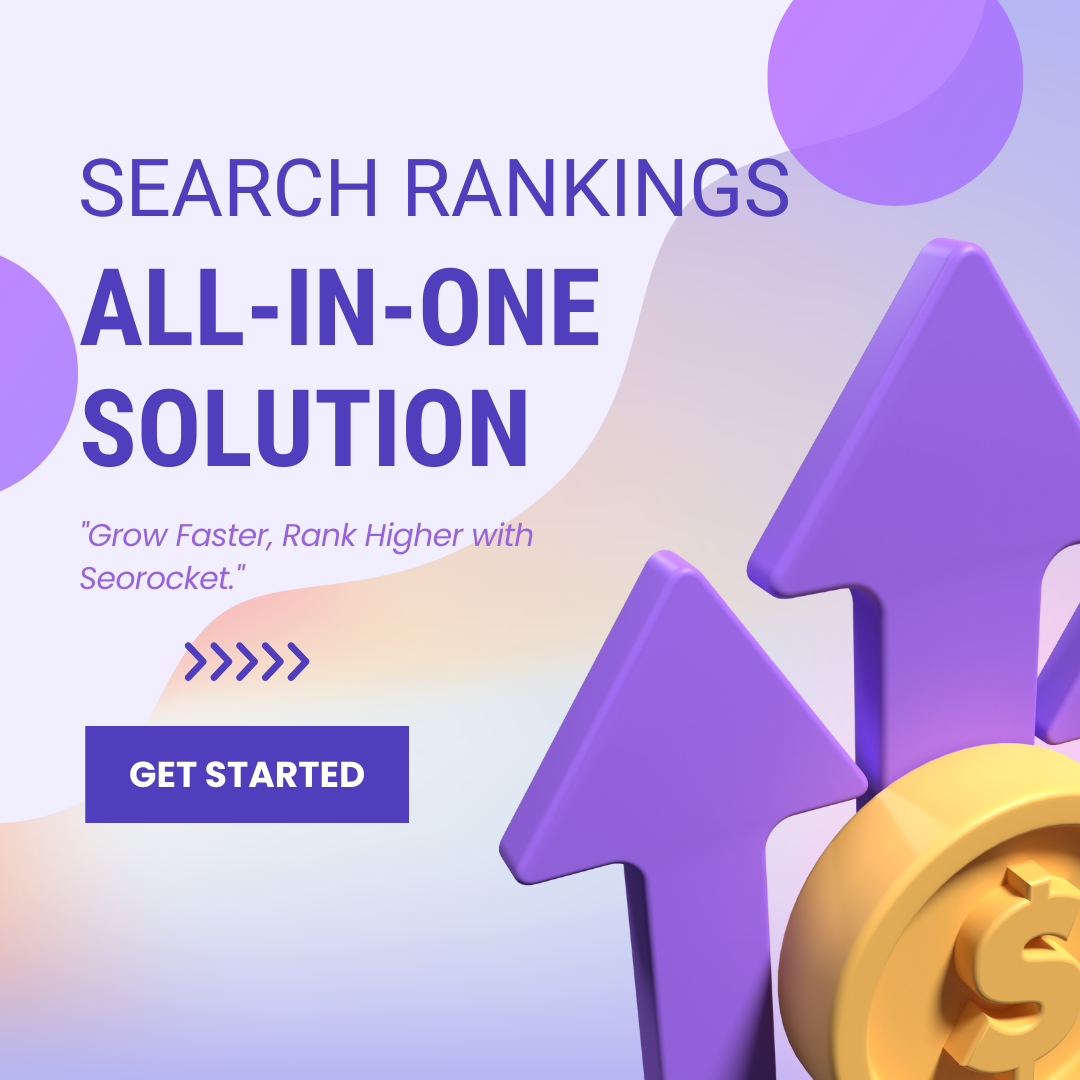Uncover the secret to unlocking your website’s potential by delving into the key pre-SEO factors that focus on understanding customers.

Image courtesy of via DALL-E 3
Table of Contents
- Introduction to Pre-SEO Factors
- Why Knowing Your Customers Matters
- Identifying Your Target Audience
- Conducting Surveys and Interviews
- Analyzing Customer Behavior
- Understanding Customer Pain Points
- Creating Customer Personas
- Using Social Media for Customer Insights
- Conclusion: Putting it All Together
- Frequently Asked Questions (FAQs)
Introduction to Pre-SEO Factors
So, you’ve probably heard the term SEO being tossed around a lot, right? But what exactly is SEO? Well, let me break it down for you in simple terms. SEO stands for Search Engine Optimization. It’s like a magic spell that helps websites like yours show up when someone searches for something on Google or other search engines. Pretty cool, huh?
But here’s the thing – before you dive headfirst into the world of SEO, there’s something super important you need to understand first: your customers. Yep, those are the people who will be visiting your website, buying your products, and spreading the word about how awesome your stuff is. Before you start optimizing your website for search engines, it’s crucial to get inside the heads of your customers and really understand what makes them tick. Trust me, it’ll make a world of difference!
Why Knowing Your Customers Matters
Understanding your customers is like solving a puzzle in a video game – it’s the key to unlocking success in any business adventure. By knowing who your customers are and what they like, you can create a strong bond that keeps them coming back for more.
Building a Connection
Imagine having a best friend who knows you so well they can predict your favorite ice cream flavor or movie genre. That’s the power of understanding your customers. When you connect with them on a personal level, they feel valued and heard, making them loyal to your brand.
Improving Products and Services
Think of your customers as superheroes with x-ray vision. They can see the flaws and strengths in your products better than anyone else. By listening to their feedback and understanding their needs, you can enhance your offerings to suit their preferences perfectly.
Identifying Your Target Audience
When starting a new business or launching a product, it’s crucial to know who your target audience is. Your target audience is the group of people who are most likely to be interested in what you have to offer. Let’s dive into how you can identify your ideal customers.
Age and Interests
One way to identify your target audience is by considering their age and interests. Think about the age group that would benefit most from your product or service. For example, if you are selling toys, your target audience is likely children between the ages of 3-12. Understanding the interests of your audience can help you tailor your marketing efforts to appeal to them better.
Location and Lifestyle
Another important factor in identifying your target audience is their location and lifestyle. Where someone lives and how they live can impact their needs and preferences. For instance, if you sell surfboards, your target audience would likely be people living in coastal regions where surfing is popular. Consider how the lifestyle of your audience aligns with what you have to offer.
Conducting Surveys and Interviews
In order to truly understand your customers and improve your business, it is essential to gather feedback directly from them. This can be done through surveys and interviews, which provide valuable insights into their needs and wants.
Creating Simple Surveys
Surveys are a great way to gather feedback from a large number of customers quickly and efficiently. When creating a survey, it is important to keep the questions simple and easy to answer. Avoid jargon or complex language that may confuse the respondents. Make sure to include a mix of multiple-choice questions, rating scales, and open-ended questions to get a comprehensive view of your customers’ opinions.
Talking with Customers
Interviews offer a more personal touch to gathering customer feedback. By talking directly with your customers, you can delve deeper into their experiences, preferences, and pain points. This one-on-one interaction provides valuable insights that may not be captured through surveys alone. Prepare a list of questions beforehand to guide the conversation and ensure you get the information you need to improve your products or services.
Analyzing Customer Behavior
When it comes to running a successful business, understanding your customers goes beyond just knowing who they are. By analyzing customer behavior, you can uncover valuable insights that can help you tailor your products and services to meet their needs and preferences. Let’s dive into how you can examine customer actions to gain a better understanding of their habits and patterns.
Using Web Analytics
Web analytics tools are like special detectives that help you track what your customers do online. These tools can show you how many people visit your website, which pages they spend the most time on, and even how they found your site. By studying these data points, you can see what interests your customers, what they like or dislike, and where they might be running into obstacles on your site. This information can guide you in making improvements to your online presence and marketing strategies to better cater to your audience.
Observing Purchase Patterns
Another way to understand your customers is by observing their purchase patterns. By analyzing when and what they buy, you can uncover trends that help you anticipate their needs and preferences. For example, you might notice that certain products are more popular during specific times of the year or that customers tend to buy in bulk after payday. By recognizing these patterns, you can adjust your stock levels, promotions, and marketing efforts to better align with your customers’ behaviors.
Understanding Customer Pain Points
When running a business, it is crucial to know and understand the pain points of your customers. These pain points are the problems or frustrations that your customers face, which can be obstacles in their buying journey. By identifying and addressing these issues, you can offer solutions that cater to their needs, ultimately improving customer satisfaction and loyalty.
Common Issues Faced by Customers
Customers experience a range of problems that can hinder their experience with a product or service. Some common pain points include:
- Long wait times for customer service
- Difficulty navigating a website or app
- High prices for products or services
- Poor quality of products
- Lack of communication from the company
Understanding these common issues allows you to empathize with your customers and tailor your offerings to better address their concerns.
Offering Solutions
Once you have identified the pain points of your customers, the next step is to offer solutions that alleviate their frustrations. Here are some ways you can address these issues:
- Improve customer service response times
- Enhance website or app usability with clear navigation
- Adjust pricing strategy to offer value for money
- Enhance product quality through better manufacturing processes
- Implement regular communication and updates to keep customers informed
By providing solutions to these pain points, you demonstrate your commitment to customer satisfaction and improve the overall experience for your target audience.
Creating Customer Personas
A customer persona is like creating a character in a story, but instead of a fictional world, you’re making a detailed profile of the different types of people who might buy your products or services. These personas help you understand your customers better by giving you insight into their needs, wants, and behaviors.
How to Build a Persona
Building a customer persona involves gathering information about your target audience and creating a fictional representation based on that data. Here’s a simple step-by-step process you can follow to develop detailed customer profiles:
1. **Research**: Start by collecting data on your existing customers or conducting market research to identify common characteristics and preferences.
2. **Identify Key Traits**: Look for patterns in your research that can help you group customers based on demographics, interests, behaviors, and buying habits.
3. **Create Profiles**: Give each persona a name, age, job, interests, and any other relevant details that make them unique. This helps you visualize and understand your customers better.
4. **Add Details**: Dive deeper into each persona by including information like their goals, challenges, motivations, and how your product or service can address their needs.
5. **Use Personas**: Once you have created your customer personas, use them as a reference when making decisions about marketing strategies, product development, and customer communication.
Using Social Media for Customer Insights
Social media platforms like Instagram, Twitter, and Facebook are not just for sharing selfies or funny memes. They can also be powerful tools for businesses to gain valuable insights into their customers’ preferences and behavior. By engaging with your audience and gathering feedback, you can learn a great deal about what your customers like and how to better serve them.
Engaging with Your Audience
One of the best ways to understand your customers through social media is by actively engaging with them. This means responding to comments, messages, and mentions from your followers. By interacting with your audience, you can establish a closer connection with them, which can help build trust and loyalty. Additionally, engaging with your customers online gives you the opportunity to ask them questions directly and get real-time feedback on your products or services.
Gathering Feedback and Data
Social media platforms offer a wealth of data that can provide valuable insights into your customers’ preferences and behaviors. By using tools like Facebook Insights or Twitter Analytics, you can track metrics such as engagement rates, demographics, and popular content. This data can help you understand what resonates with your audience and tailor your marketing strategies accordingly. Additionally, social media surveys or polls can be a quick and effective way to gather feedback on new products, campaigns, or initiatives.
Conclusion: Putting it All Together
In the journey of optimizing your website for search engines, one crucial aspect stands out above all – understanding your customers. Before diving into the complex world of SEO, it is imperative to have a solid grasp of who your customers are, what they want, and how you can cater to their needs. Let’s recap the key takeaways we’ve covered in this exploration of pre-SEO factors.
Why Knowing Your Customers Matters
Building a Connection: Understanding your customers allows you to forge a strong relationship with them. By knowing their preferences, habits, and pain points, you can tailor your products and services to meet their specific needs, fostering loyalty and trust.
Improving Products and Services: Through insights gained from customer understanding, you can continuously enhance your offerings. By listening to feedback and analyzing behavior, you can refine your products to better suit customer desires, ultimately leading to business growth and success.
Identifying Your Target Audience
Age and Interests: By pinpointing the age group and interests of potential customers, you can tailor your marketing strategies to appeal to those most likely to engage with your brand. This targeted approach can help maximize the effectiveness of your efforts.
Location and Lifestyle: Understanding where your customers live and how they lead their lives can provide valuable insights into their preferences and behaviors. This knowledge enables you to craft messages and offerings that resonate with their unique lifestyles.
Conducting Surveys and Interviews
Creating Simple Surveys: Gathering feedback through surveys allows you to collect valuable data directly from your customers. By asking targeted questions in a straightforward manner, you can uncover valuable insights that inform your business decisions.
Talking with Customers: Engaging in interviews provides a deeper understanding of customer needs and desires. Through open conversations, you can delve into the motivations behind customer behavior, gaining a comprehensive view of how to best serve them.
Analyzing Customer Behavior
Using Web Analytics: Leveraging tools that track customer behavior online offers valuable insights into how users interact with your website. By analyzing this data, you can optimize your online presence to better meet customer expectations and improve user experience.
Observing Purchase Patterns: By studying purchase trends and patterns, you can identify popular products, peak buying times, and customer preferences. This information equips you to anticipate customer needs and tailor your offerings accordingly.
Understanding Customer Pain Points
Common Issues Faced by Customers: Identifying and addressing common customer frustrations and challenges enables you to provide effective solutions that enhance customer satisfaction. By alleviating pain points, you can build a loyal customer base that values your products or services.
Offering Solutions: By developing products or services that directly address customer pain points, you can position your brand as a problem solver. By showcasing how your offerings meet customer needs, you can differentiate yourself in the market and attract a loyal following.
Creating Customer Personas
What is a Customer Persona?: Customer personas are fictional representations of your key customer segments. By creating detailed profiles that encapsulate their demographics, behaviors, and preferences, you can tailor your marketing efforts with precision.
How to Build a Persona: Crafting customer personas involves researching and synthesizing data to create comprehensive profiles. By outlining the goals, challenges, and preferences of each persona, you can align your marketing strategies to resonate with different customer segments.
Using Social Media for Customer Insights
Engaging with Your Audience: Interacting with customers on social media platforms allows you to build relationships and foster engagement. By actively participating in conversations, responding to feedback, and sharing valuable content, you can cultivate a loyal following.
Gathering Feedback and Data: Social media platforms offer valuable tools for collecting feedback and data on customer preferences. By leveraging analytics and monitoring customer interactions, you can gain valuable insights that inform your marketing strategies and product offerings.
By prioritizing customer understanding in your pre-SEO activities, you lay a strong foundation for successful search engine optimization. Remember, SEO is not just about keywords and algorithms – it’s about connecting with your audience in meaningful ways. Start by knowing your customers inside and out, and watch as your SEO efforts yield significant results.
Frequently Asked Questions (FAQs)
What is the importance of understanding customers before starting SEO?
Before diving into SEO, it’s crucial to know who your customers are and what they are looking for. Understanding your customers helps tailor your website content, products, and services to meet their needs and preferences. By aligning your SEO strategies with your customers’ expectations, you can attract more relevant traffic and improve your overall online presence.
How can understanding customers help build a better relationship?
By gaining insights into your customers’ preferences, behavior, and pain points, you can create personalized experiences that resonate with them. This personalized approach shows that you understand and value your customers, leading to stronger connections and loyalty. Building a relationship based on understanding can foster trust and encourage repeat business.
Why is it essential to identify your target audience?
Identifying your target audience allows you to focus your marketing efforts on the people most likely to be interested in your products or services. By determining key demographic and psychographic factors such as age, interests, location, and lifestyle, you can tailor your messaging and promotions to appeal directly to your ideal customers. This targeted approach can result in higher conversion rates and increased customer engagement.







